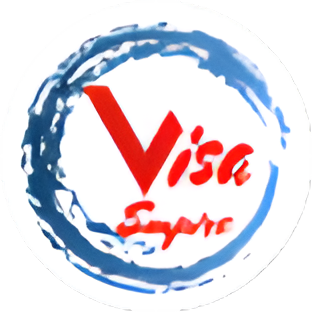Complete Guide to Partner Visa 820/801: Temporary to Permanent Residency

Are you planning to live in Australia with your spouse or de facto partner? The Partner Visa 820/801 can serve your best interests in that matter. This pathway happens to be the most common route from a temporary onshore visa to permanent residency.
This guide is going to provide you with every single valuable information related to it. It breaks down eligibility, subclass 820 visa requirements, the subclass 801 visa requirements, the documents checklist, costs, processing time, common pitfalls, and practical tips to help couples prepare a strong application.
So without further ado, let’s proceed.
What is the Partner Visa 820/801?
The Partner Visa 820/801 is a two-stage onshore process for people whose partner is an Australian citizen, Australian permanent resident, or eligible New Zealand citizen.
- Subclass 820 is the temporary (onshore) partner visa granted while your application is being processed. It allows you to live, work, and study in Australia and usually leads to the second-stage assessment.
- Subclass 801 is the permanent partner visa. After a period (generally around two years from lodgement) the Department will assess whether the relationship is genuine and continuing before granting the permanent visa.
Together, the 820/801 pathway provides a clear route from onshore temporary stay to permanent residency through marriage or de facto partnership.
Who Can Apply? (Australian Partner Visa Eligibility)
In order to be eligible for an Australian partner visa, you must be in a genuine and continuing relationship with an Australian sponsor. The sponsor must either be:
- an Australian citizen,
- an Australian permanent resident,
- or an eligible New Zealand citizen.
The applicants fall into two relationship categories. Those are:-
- Married partners- In this case, a valid marriage certificate or evidence of a legally recognised marriage needs to be provided.
- De facto partners- In this case, proof that you have been in a genuine de facto relationship for at least 12 months before application (unless you meet an exemption) is needed.
Both parties must meet health and character checks and the sponsor must meet sponsor obligations. Evidence of cohabitation, financial interdependence, social recognition, and commitment to a shared life is key to proving your relationship.
Subclass 820 Visa Requirements (temporary stage)
When lodging for the temporary partner visa 820, you’ll need to show the following:-
- You meet the relationship criteria (married or de facto).
- You are physically present in Australia when you apply (onshore application).
- Identity documents (passport, birth certificate).
- Police clearances and health checks.
- Relationship evidence (detailed below).
On lodgement, you will normally receive a Bridging Visa. It will allow you to stay lawfully while the Department assesses your application.
You must keep in mind that the 820 is only a temporary grant. Permanent status depends on the 801 assessment.
Subclass 801 Visa Requirements (permanent stage)
The subclass 801 assessment typically occurs about two years after the initial application date. The Department will want updated evidence that your relationship remains genuine and continuing. This may include the following:-
- Updated statutory declarations and relationship statements from you and your partner.
- Recent joint financial documents, joint residence proof, photos, travel records, and communications.
- Any other evidence showing ongoing commitment (plans, joint children, shared responsibilities).
You do not normally need to lodge a separate application for 801. The original lodgement covers both stages. Still, you must be ready to supply fresh evidence when requested
Documents Checklist (what to prepare)
A strong application is organized around four pillars. They are identity, relationship, sponsor evidence, and health/character.
Typical documents include the following:-
- Identity: passport biopage(s), birth certificate, national ID.
- Relationship evidence: marriage certificate (if married), joint leases, joint bank accounts, shared utility bills, joint insurance, travel together, photos, correspondence, and social evidence.
- Sponsor evidence: sponsor’s Australian citizenship/permanent residency or eligible NZ evidence, statutory declarations of support.
- Other: police certificates, chest x-ray/medical reports where required, and English translations for non-English documents.
Statutory declarations from friends and family describing your relationship timeline and milestones are valuable when written with specific and verifiable detail.
Partner Visa Cost Australia
Visa application charges for partner visas were updated in 2025. The partner visa charge (for onshore 820/801 and related partner subclasses) is indeed quite significant. Thus, applicants should always check the Department’s Visa Pricing Estimator for the exact, up-to-date fee before lodging, as amounts are updated periodically.
You can expect to pay thousands of AUD and factor in additional costs for medicals, police checks, and certified translations.
Partner Visa Processing Time & Timeline
Processing times vary widely depending on the volume of applications, the complexity of your case, and the completeness of evidence. Typical expectations are:-
- 820 (temporary)- Its lodgement usually triggers a Bridging Visa. Numerous onshore 820 applications are processed within 12–24 months for large proportions of applicants. However, timelines can be longer.
- 801 (permanent)– It is assessed roughly two years after the 820 lodgement date. The Department may invite additional evidence before granting the 801.
Due to backlogs and periodic policy changes, you must allow for flexible timing and keep supporting documents current while waiting.
Common Mistakes (and how to avoid them)
Now let’s have a look at some of the common mistakes and how you can avoid them:-
- Weak relationship evidence- Don’t submit only a few photos. You must also provide a range of financial, social, and household proof across time.
- Inconsistent statements- Ensure that the dates and names match across all documents.
- Missing sponsor evidence- The sponsor must demonstrate eligibility and often supply statutory commitments.
- Outdated supporting docs- You must update joint bank statements, leases, and other proof while awaiting the 801 stage.
- Ignoring health/character checks- Arrange police certificates early and book medicals promptly when requested.
A carefully compiled and chronologically organised file with a relationship timeline and index assists decision-makers in reviewing your case quickly.
Practical Tips To Strengthen Your Application
Now, here we present before you some practical tips that will assist in strengthening your application:-
- Create a relationship timeline ( including key dates, milestones, cohabitation, and travel).
- Use statutory declarations from reliable witnesses describing specific interactions/events.
- Keep ongoing evidence while waiting for the 801 stage (joint bills, travel, and messages).
- Be proactive. You must respond promptly to Department requests and update your ImmiAccount if circumstances change.
- Consider a professional review. A registered migration agent can check your evidence and reduce the risk of avoidable delays.
Pathway To PR Through Partner Visa & Next Steps
Once the subclass 801 is granted, you become a permanent resident. After that, you will be eligible for Medicare, work and study rights, and a pathway to citizenship when you meet residence criteria. Many couples use Partner Visa 820/801 as the main route to temporary to permanent residency in Australia.
Final Thoughts
The Partner Visa 820/801 offers a clear route from living together onshore to achieving permanent residency. However, its success hinges on well-prepared evidence, meeting Australian partner visa eligibility, and staying responsive during the process.
Processing times and fees often change. Thus, you must always verify current details via official Department resources before lodging.
If you want personalised help compiling your partner visa documents checklist, navigating subclass 820 visa requirements, or preparing updated proof for the subclass 801 visa requirements, Visa Empire can help. As trusted migration agents in Perth, we guide couples through each step; right from paperwork and medical checks to responding to Department requests. This enables you to focus on building your life together.
Now, it’s time to start your partnership pathway to Australia with confidence. Contact Visa Empire today for expert partner visa support and maximise your chances of a timely approval.
Frequently Asked Questions (FAQs)
1. What is the difference between Partner Visa 820 and 801?
The Partner Visa 820 is the temporary onshore visa, allowing you to live and work in Australia while your relationship is assessed. The Partner Visa 801 is the permanent residency stage, granted after further review to confirm your relationship is genuine and continuing. You apply once for both, but approval happens in two steps.
2. How long is it from 820 to 801 visa?
It is generally around two years from the date you lodge your 820 application before the 801 visa is assessed. Some cases may take longer depending on processing times and whether the Department requests additional evidence.
3. Can 820 and 801 be granted together?
In very limited circumstances, the 820 and 801 visas can be granted at the same time, such as when applicants have already been in a long-term relationship (usually 3+ years, or 2+ years with a child together) at the time of application. Most applicants receive them separately.
4. Is the 801 visa granted immediately?
No. Even if you are eligible relatively early, the 801 visa is not granted immediately. The Department assesses evidence again and may ask for updated documentation before granting permanent residence.



